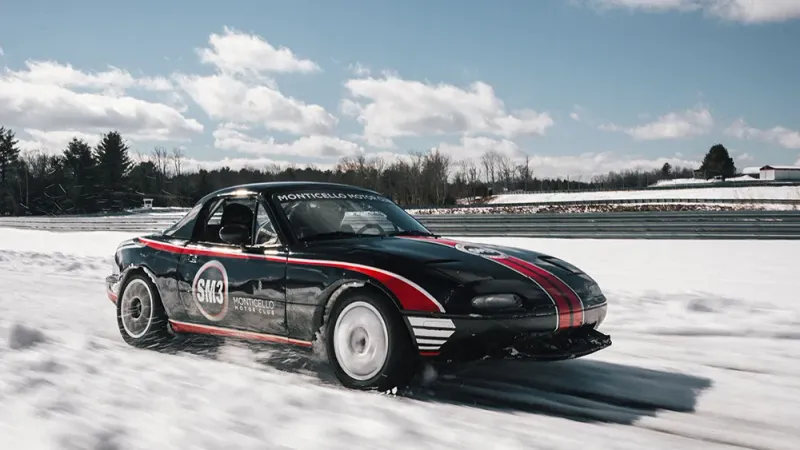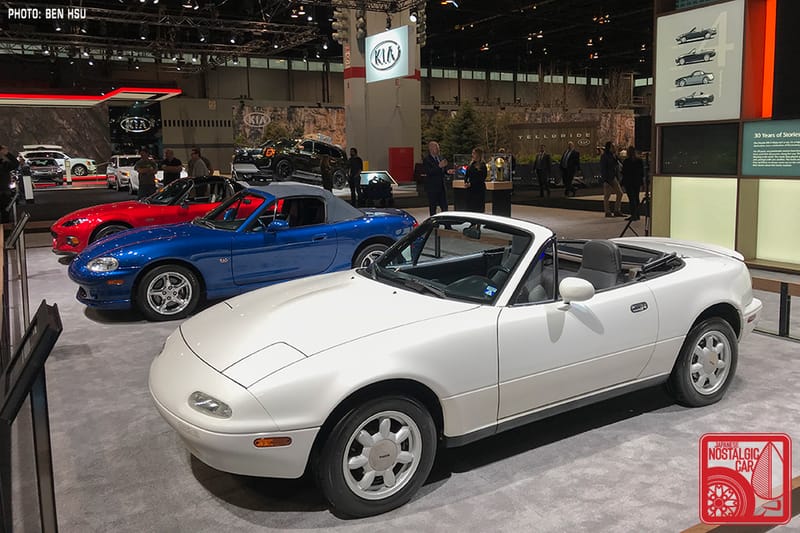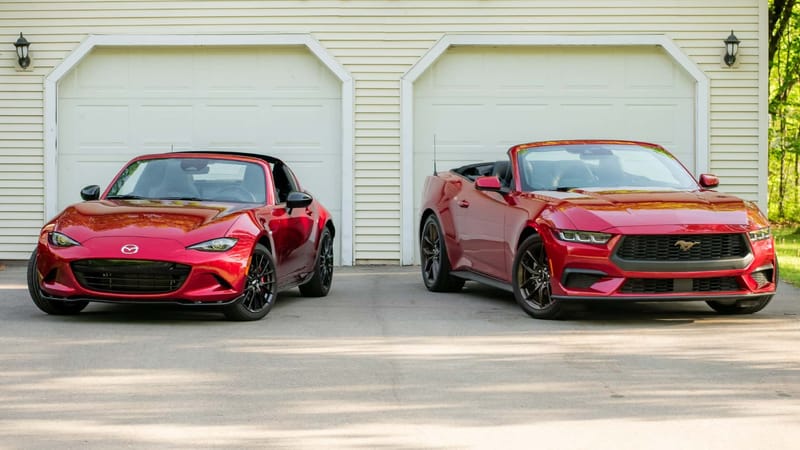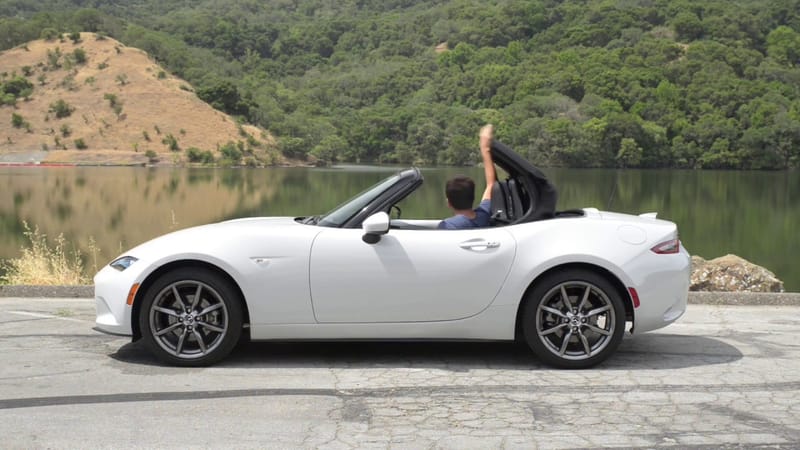Winter Warriors: Driving a Miata in the Snow
Rear-wheel drive, low weight, and a soft top sound like winter nightmares. This guide explores how enthusiasts tackle icy roads, offering winterization tips, real-world experiences, and why the Miata proves that fun doesn’t stop when the snow falls.
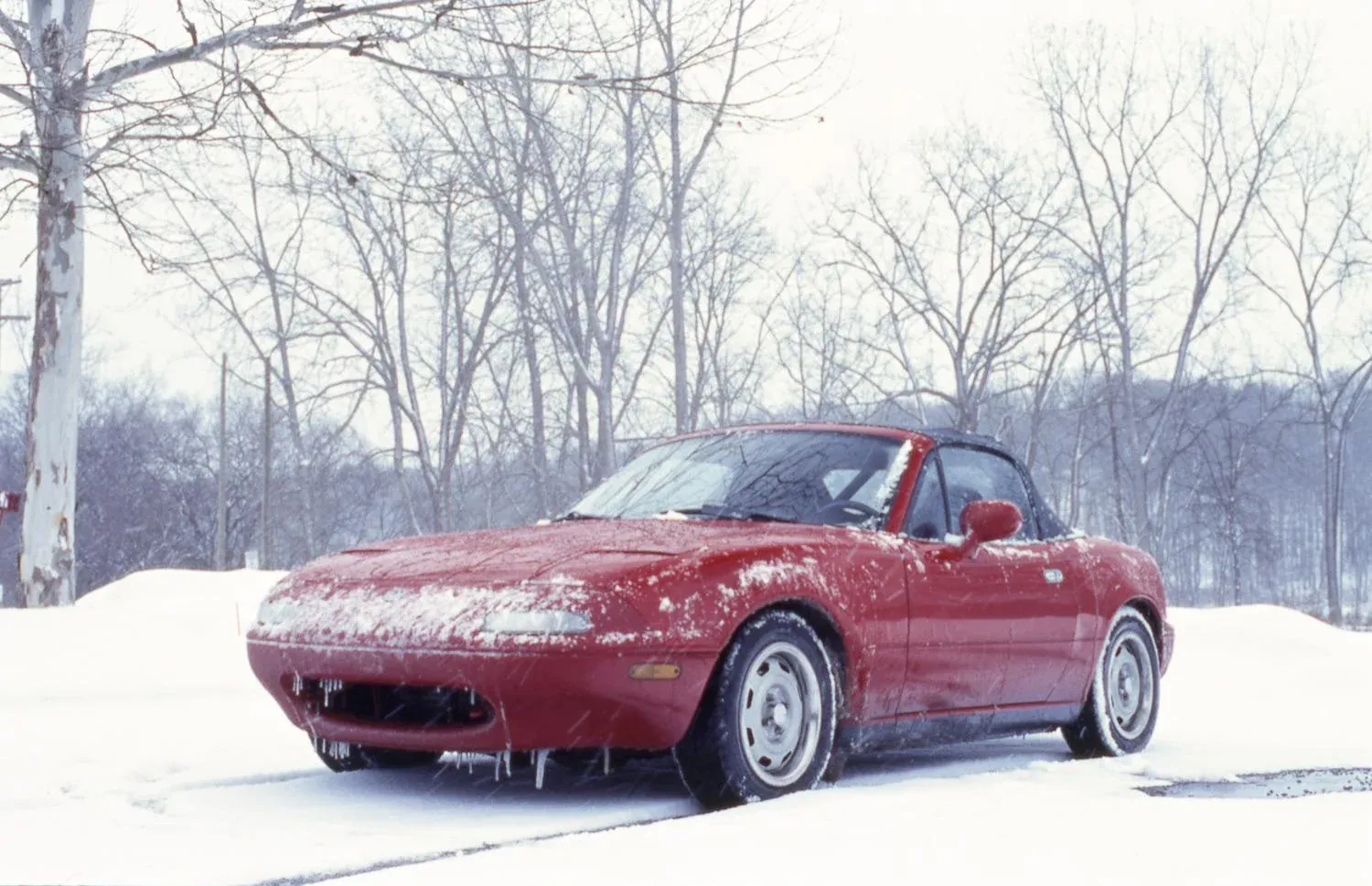
How a lightweight roadster defies expectations in the harshest conditions sums up the this idea: a small convertible taking on icy, treacherous roads usually left to SUVs and sedans. However, many Miata owners and enthusiasts have discovered that, with the right preparations, this playful little sports car can become an unexpected hero during the colder months.
Most automotive logic would warn against driving a rear-wheel-drive convertible in freezing conditions. The Miata is small, light, and lacks the practicality of a traditional winter vehicle. Yet countless stories, anecdotes, and forum posts point to its surprising competence when equipped with proper winter tires, tuned driving habits, and a dash of caution. What appears to be a recipe for disaster on paper often turns into an adventure on actual winter roads.
This article provides a deeper look at why the Miata manages so well in snow, offers tips for winterization, and shares first-hand experiences from those who have risked taking their roadsters into frigid, slippery territory. The discussion begins with a quick nod to the Miata’s storied heritage and then dives into specific preparation strategies. After that, it explores real-world snow-driving experiences, community insights, and an honest assessment of pros and cons. Finally, it wraps up with a reminder that “impossible” is sometimes just another word for “untried.”
Preparation for Winter Driving
If a single principle governs winter Miata ownership, it is this: winter tires are non-negotiable. Proper snow tires transform the Miata from a slip-and-slide accident riskl; into a capable snow traversing car. Summer or worn all-season tires will lead to frustrating. and potentially dangerous. encounters with ice and snow.

To harness what the Miata does best, traction aids and smart driving inputs become critical. The car’s traction control system, combined with an LSD when equipped, moderates wheel spin to maintain just enough traction without robbing all power. Gentle throttle application and smooth clutch work are equally important, especially when starting on icy surfaces. Jerky or aggressive inputs can easily unbalance the lightweight chassis.
A well-winterized Miata also needs attention to fluids and battery health. A thinner, cold-weather-friendly engine oil such as 5W-30 aids in cold starts. Some Miata drivers partially block the radiator in extremely frigid climates, monitoring the temperature gauge to ensure no risk of overheating. Battery health is crucial, given the compact size of the Miata’s power storage system; a weak battery may fail more readily in freezing temperatures.
Debate persists around adding weight in the trunk for extra grip. Some drivers swear by a bit of ballast to aid rear-wheel traction, whereas others caution that additional mass can negatively affect front-end grip and braking distances. Most longtime Miata owners lean toward skipping extra weight, so long as proper winter tires and careful driving techniques are in play. Regardless of personal preference, wise owners keep basic winter provisions. such as a shovel, salt or kitty litter, and a tow strap. in the trunk.

Real-World Road Tests
Those who have driven a Miata through harsh winters often share similar tales: initial apprehension followed by unexpected success. One memorable scenario involved navigating a dense urban snowstorm, where unplowed side streets were lined with drifts. Despite widespread assumptions that a two-seat roadster would fail, the Miata managed the conditions with relative ease, thanks to winter tires and careful throttle control.
Another test involved a lengthy highway trip in sub-zero temperatures. Over a 400-kilometer round journey, the Miata remained stable at higher speeds and maintained a respectable 6.5–7 liters per 100 kilometers in fuel consumption. Although it lacked the weight that many believe is necessary for winter confidence, its balanced chassis and responsive traction control compensated effectively. The primary caution was braking distance, as ice patches demanded gentle, anticipatory maneuvers.
Ground clearance is one area where the Miata remains vulnerable. In significant snowfall. anything beyond 6 to 8 inches. the Miata’s low stance risks “beaching,” in which the undercarriage drags along the snow. Drivers in regions prone to heavy accumulations must keep this limitation in mind or plan routes around better-cleared roads. Nevertheless, for moderate snow depths and consistent plowing, the lightweight Miata can hold its own.
Opinions also vary on soft-top versus RF configurations. The soft-top version can stay warm inside, though it allows more wind noise and occasional drafts. The RF’s hard roof, by contrast, typically feels cozier and quieter. Owners of both models often highlight their comfort with top-down winter driving. provided it is done briefly and temperatures are at least somewhat bearable.
The Surprising Joy of Sliding
While winter driving often focuses on safety and caution, Miata owners note that rear-wheel drive can also unlock a side of winter driving that is genuinely entertaining. provided it is done responsibly. A modest 180-horsepower output prevents uncontrollable wheelspin when drivers exercise common sense. The Miata’s excellent manual gearbox allows precise control of power, letting the driver ease into or correct a slide more gracefully.
Many enthusiasts hone their skills in deserted parking lots or winter autocross events. Slow-speed drifting on snow helps drivers understand the Miata’s slip angles and balance. By practicing in controlled environments, they prepare for real-world situations where the rear end might step out unexpectedly. Of course, the same owners stress that public roads are never the place to attempt playful drifts.
Steering and braking remain key strengths. The Miata’s renowned steering feedback translates surprisingly well to slippery surfaces, making it easier to sense when the tires begin to lose grip. Because of its low curb weight, the Miata can also stop with relative precision. though no car is immune to ice. Maintaining additional following distance is always critical, regardless of a vehicle’s capabilities.
Practicality & Comfort (or Lack Thereof)
No assessment of a Miata’s winter performance would be complete without mentioning its limits on cargo and passenger capacity. Two seats and a tight trunk cannot accommodate extensive luggage or large winter gear without creative packing. Owners who require ample space for frequent winter getaways or family trips might need an additional vehicle or to rethink how they load the car.

On the positive side, the compact cabin warms quickly, minimizing that initial chill during cold starts. Heated seats, where available, boost comfort levels, and the defroster effectively clears the limited glass area. Infotainment in older ND models can be sluggish in freezing conditions, but the ND3’s system is somewhat improved. though not revolutionary by modern standards.
Lastly, road salt is a longstanding foe of Miatas. Frequent undercarriage washes are essential in snowy regions that rely heavily on salt to keep roads clear. Rust-proofing or additional coatings may also be worth consideration for those who plan on driving their Miatas year-round over multiple winters.
A Broader Perspective
Readers seeking further proof of the Miata’s winter capabilities can turn to the r/Miata subreddit or other enthusiast forums. Drivers in Minnesota, Michigan, Canada, and even Norway share stories of tackling snowstorms and icy roads without serious issues. The constant refrain? Use quality winter tires, maintain smart driving habits, and learn the unique quirks of a lightweight, rear-drive platform.
Some community members run turbocharged or supercharged Miatas, dialing back boost or adopting milder suspension settings during the cold season. Softening coilovers or re-installing stock sway bars can further stabilize the ride on rough, icy roads. When confronted by skeptics, these owners often attribute the Miata’s success in winter to its well-balanced chassis and effective tire choices. Notably, many find it more confidence-inspiring than heavier front-wheel-drive cars on mediocre all-season tires.
Pros & Cons
Pros. The Miata’s inherent “fun factor” remains alive in winter, surprising drivers who assume the car must stay garaged until spring. Its fuel efficiency, even in cold conditions, rarely rises above 7 liters per 100 kilometers, which is outstanding for a sporty vehicle. The small cockpit heats up quickly, and the car’s nimble nature can be an advantage in moderate snow depths, aiding in maneuverability and responsiveness.
Cons. Practicality is limited by the two-seat layout and minimal trunk space. Ground clearance can pose problems in deep snow, risking beached scenarios. While the Miata’s rear-wheel-drive layout is manageable with proper technique, new drivers may experience a learning curve when cornering on icy roads. Additionally, road salt can accelerate rust if the undercarriage is not regularly cleaned and protected.
Defying Expectations
Ultimately, the Miata’s winter performance surprises many who wrote it off as a purely summer toy. With winter tires, a bit of care, and a willingness to adapt driving style, the Miata can thrive in conditions that initially seem ill-suited for a lightweight convertible. Rather than rendering the Miata obsolete for half the year, colder climates provide another chapter of engagement and driver development.
Of course, the Miata is not an all-purpose solution. Larger families, those needing significant cargo room, or residents of regions plagued by frequent deep snowfalls may find its limitations too great. However, for individuals who relish a connected driving experience, have modest hauling needs, and see winter as an opportunity rather than an obstacle, a Miata can be a compelling choice. one that challenges common wisdom about sports cars in winter.
Anyone intrigued by the idea is encouraged to equip their Miata with proper snow tires, gather a basic winter emergency kit, and spend some time practicing safe driving habits in a controlled environment. As countless owners will attest, once the initial doubt gives way to real-world experience, the Miata often proves that a “lightweight roadster” has more grit and capability than meets the eye.
For readers wanting a deeper dive into winter preparations, many Miata owners recommend a dedicated winter driving checklist. This typically includes winter tires, a small shovel, salt or kitty litter for traction, a tow strap, and extra warm accessories like blankets or gloves. In extremely cold climates, exploring alternative engine oils, checking battery health, and opting for professional rustproofing are also wise measures.
Visual documentation can add flair to the winter Miata experience. Some owners create photo essays showcasing their cars in the snow. highlighting winter tires, icy windshields, or trunk-packing strategies. Others post short videos to illustrate how the Miata behaves in snowy parking lots or country roads. Sharing these experiences encourages a broader community of owners to exchange tips and lessons learned.
Regardless of how one chooses to approach winter behind the wheel of a Miata, the key takeaway remains consistent: with thoughtful preparation, mindful driving, and a sense of adventure, this seemingly summer-centric sports car can shine as a true “Winter Warrior,” proving to skeptics and fans alike that a lightweight roadster is more versatile than anyone might imagine.

